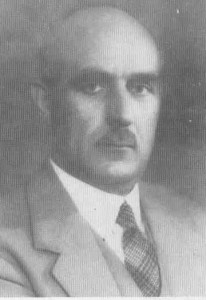SPENCER-JONES, Harold [Sir] [KBE; FRS]Professional Astronomer Born: 1890 |
|
|
|
|
Famous for:
Summary: |
|
|
|
|
| History: Spencer Jones came to the Cape from the Royal Greenwich Observatory where he had been senior Chief Assistant. “His terms of office at the Cape – 1923-1933 – included the years of depression; and as these coincided with the need to renew and repair equipment which could not be properly maintained during the war years, he had a continuous struggle to obtain the essential funds. Fortunately, he was a convincing and experienced advocate who enjoyed the respect of the authorities in all departments, so that his appeals did not go unheard. The Observatory accommodation was modernised, and a new office block was built during his time at the Cape, while in the field of research the backlog of old programmes was cleared away and new projects started”. [Copied from Moore, pp. 80 – 81.] “Most of the members of the Observatory staff had been engaged by Gill, and were nearing retirement age. It was Spencer Jones who initiated the policy of replacing retired staff members with fully qualified South Africans whenever possible, a policy that has been continued with marked success. Indeed, a later Director remarked, mournfully, that the young South African astronomers were so good that many of them were tempted overseas when they had gained experience”. [Copied from Moore, p. 81.] -For the time preceding his appointment at the Royal Cape Observatory, nearly all the staff was seconded (transferred) from the Royal Observatory at Greenwich. Spencer Jones broke away from the tradition and made an effort to cultivate and recruit staff locally. [Laing, p. 18.] “The Cape Astrographic Zone, photographed by Gill and his staff for the Carte du Ciel, was re-photographed in its entirety, so that the new plates could be compared with the old ones. From these comparisons, the proper motions of more than 40,000 stars were measured”. [Copied from Moore, p. 82.] “The Victoria Telescope, which had been used in a radial velocity programme, was devoted to a photographic parallax programme for the purpose of measuring the distance of several hundred of the closer southern stars”. [Copied from Moore, p. 82.] “At the end of 1930 the minor planet Eros made an exceptionally close approach. Until well into 1931, sixteen northern and six southern observatories combined in a project, largely organised by Spencer Jones, to find the parallax of Eros and thence to make a new measurement of the astronomical unit. (He was chairman of Commission 34 of the International Astronomical Union [Laing, p. 15.] ) Much of the work was undertaken at the Cape, and it was Spencer Jones who made the resulting calculations. His derived value for the unit was rather over 93 000 000 miles. This is now known to be rather too large – the latest value, from radar measurements, is 92 957 209 miles – but it nevertheless represented a notable piece of research”. [Copied from Moore, p. 82.] “However, the greatest programme which was set in motion during Spencer Jones’ regime was the Cape Photographic Catalogue for 1950, giving the precise positions, colours, magnitudes, and – with a few exceptions – proper motion for 70 000 southern stars”. [Copied from Moore, p. 82.] “Spencer Jones returned to England in 1933, to a knighthood and to the post of Astronomer Royal. He paid one return visit to the Cape, in 1948, to arrange a co-operative research scheme with the Radcliffe Observatory. His period as Astronomer Royal, which lasted until 1954, was memorable in every respect – and saw the virtual completion of the move of the main instruments from Greenwich Park to Herstmonceux. Spencer Jones died in 1960, working actively on his research programme until a day or so before his death”. [Copied from Moore, p. 82.] Career: Chief Assistant at Royal Greenwich Observatory. 1923 -1933: Director of the Royal Cape Observatory. His Chief Assistants were:J. Halm (1923 – 1927) H. Horrock (1927 – 1935) 1933 and 1954: Astronomer Royale. 1933(?): Received Knighthood. President of the British Astronomy Association. 1955: Retired to London. . Personal: 1890: Born in London. Educated at Latymer Upper School in Hammersmith. University at Jesus College, Cambridge. (He became a fellow.) 1923 to 1954: *Look Career. 1955: Retired to London. 1860: Died. |
|
|
|
|
|
Link to the Telescope Manufacturers. |
|
|
|
|
|
Link to the Main Bibliography Section and more information about Sources. |
|
| Remaining Artifacts: . Bibliography: Laing, J.D. (ed.), The Royal Observatory at the Cape of Good Hope 1820 – 1970 Sesquicentennial Offerings, p. 15. Moore, P. & Collins, P., Astronomy in Southern Africa, pp. 80 – 83. (General Source) Smits, P., A Brief History of Astronomy in Southern Africa. (Unpublished)By Spencer-Jones: |
|
|
|
|
| Related Internal Links: Royal Observatory at the Cape of Good Hope. . Related External Links: Historical Astronomical Posts in Britain and Ireland Fellows of the Royal Society: Bruce Medal: |
|
Gallery
Sir Harold Spencer-Jones
Source: Laing
Source: Laing


